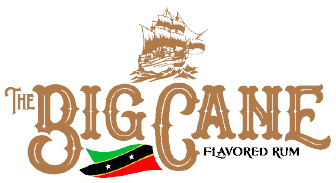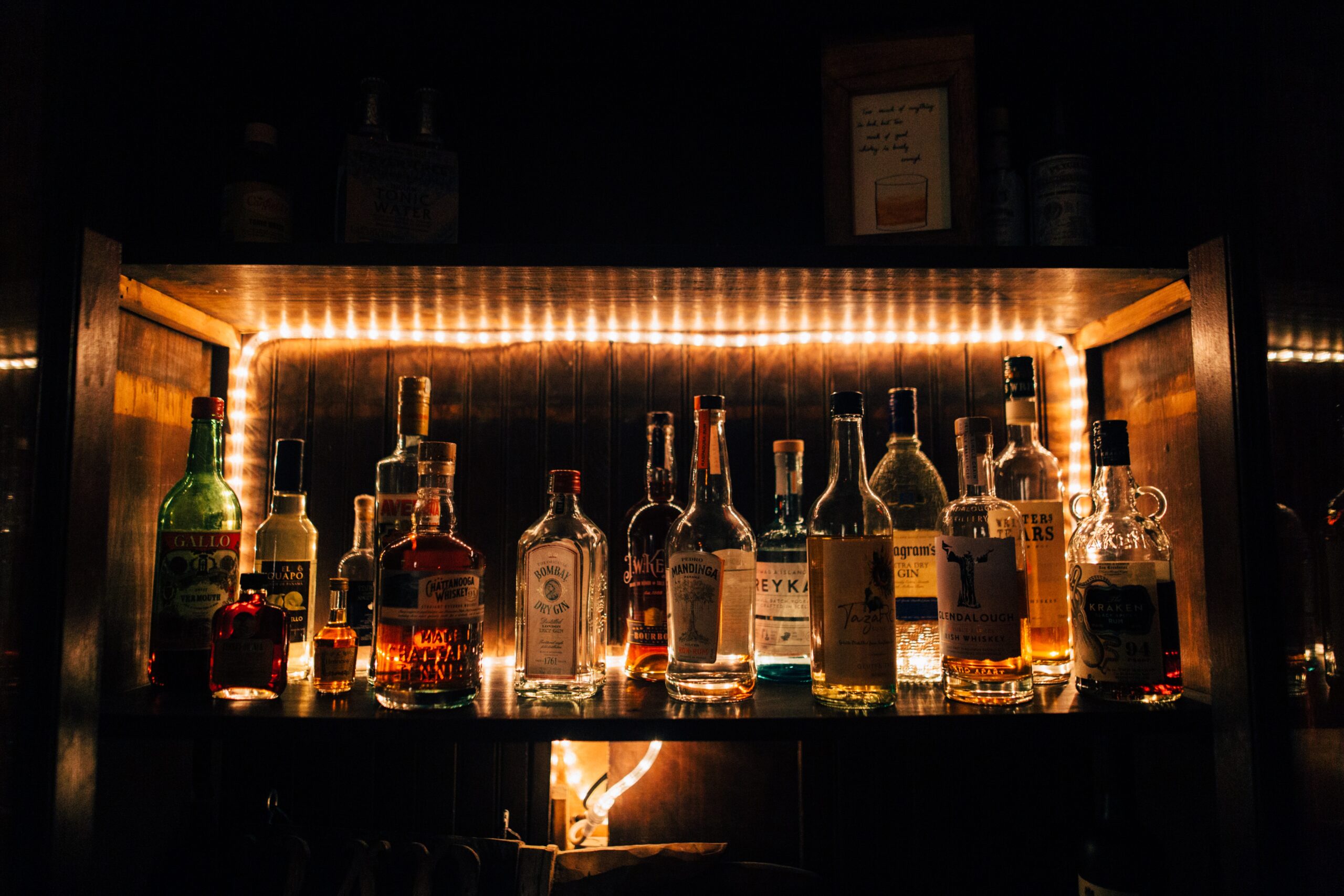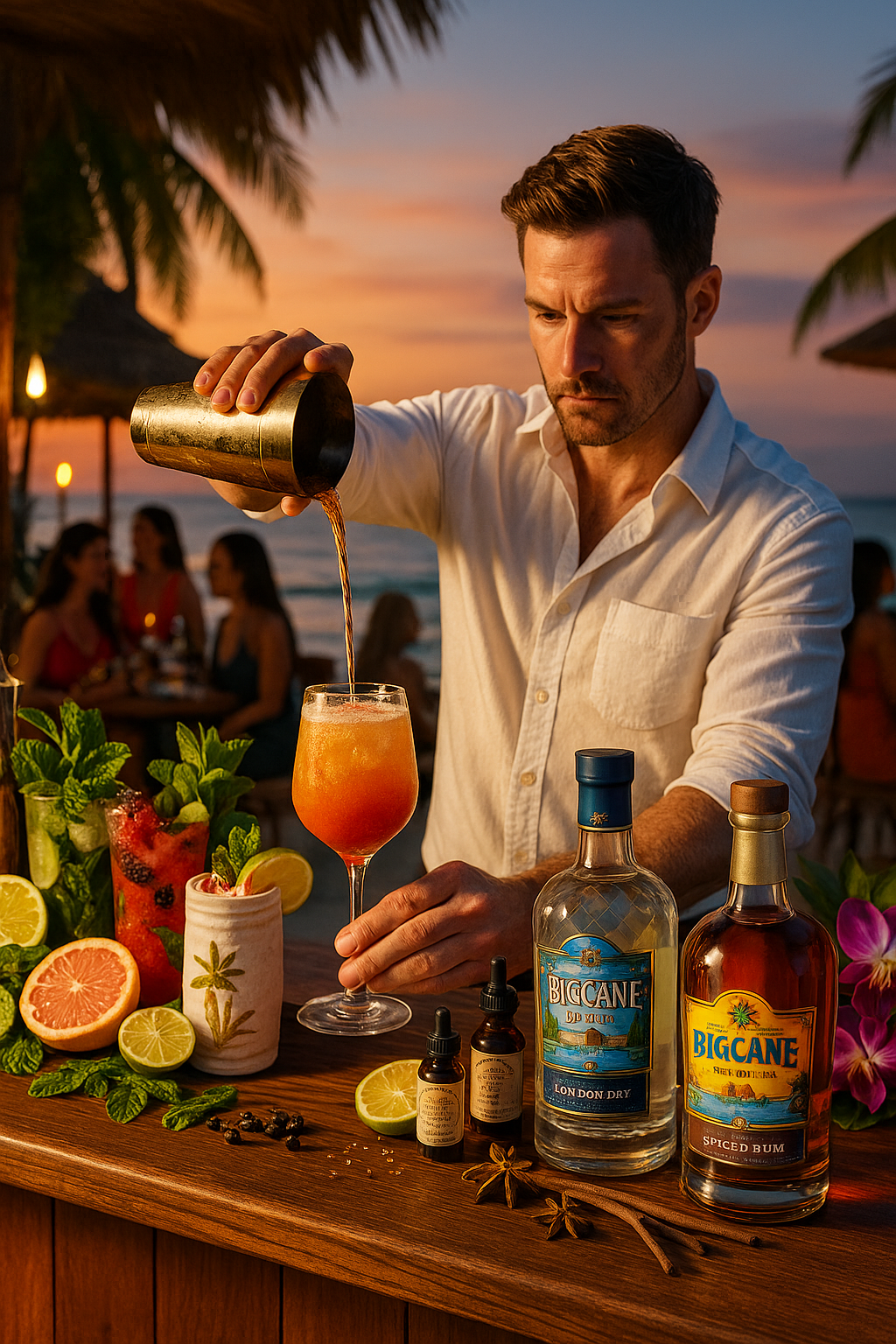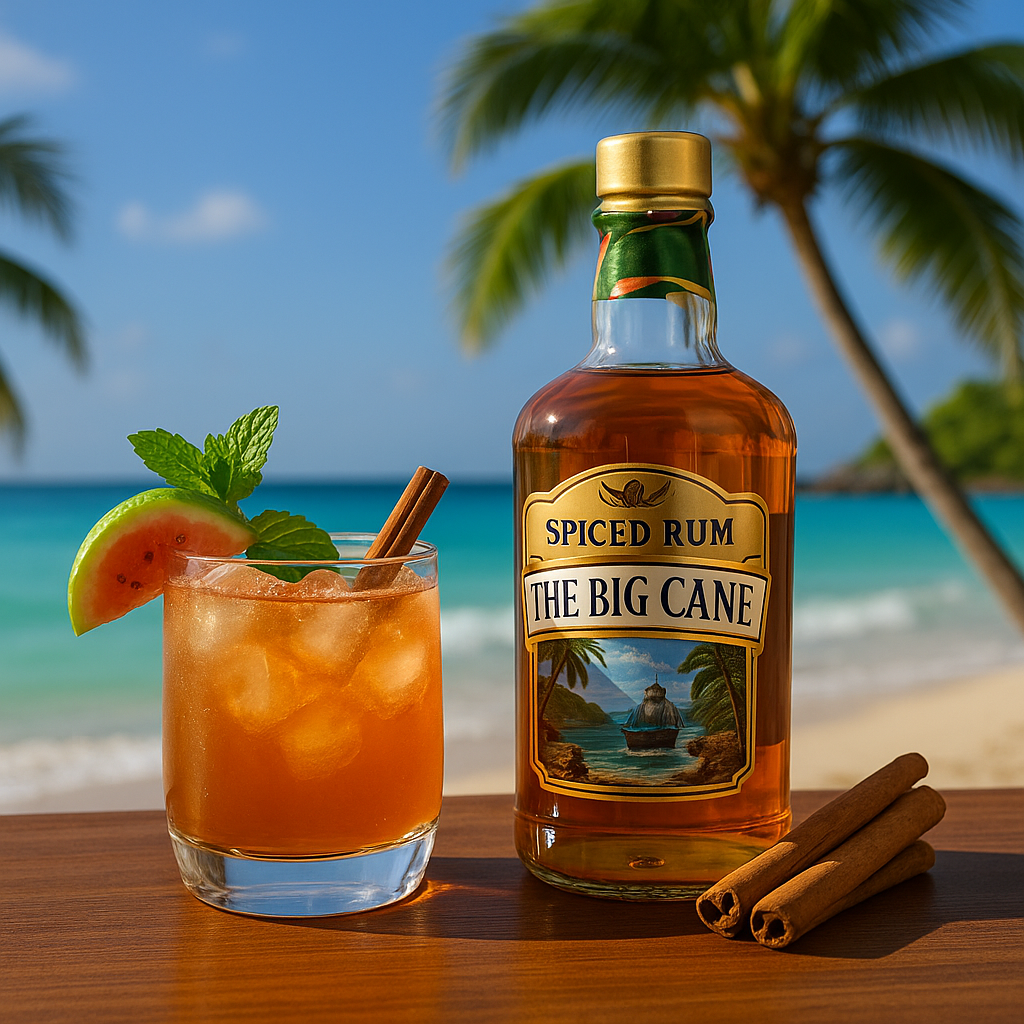
Few spirits have shaped an entire region's cultural identity as profoundly as rum has influenced the Caribbean. From its origins in 17th-century sugar plantations to its central role in modern Caribbean celebrations, rum has been more than just a beverage—it has been a catalyst for cultural expression, a symbol of both oppression and liberation, and a medium through which Caribbean people have told their stories for centuries. This deep cultural significance extends far beyond the distillery, touching everything from literature and music to politics and social transformation.
The Birth of Rum: Colonial Origins and Early Impact
Rum's story begins with the European colonization of the Caribbean and the establishment of sugar plantations in the 17th century. What started as a way to utilize molasses—a byproduct of sugar production that was initially considered waste—quickly became an economic force in its own right.
The earliest rum production coincided with one of the darkest chapters in Caribbean history: the transatlantic slave trade and plantation slavery. For enslaved Africans forced to work in the brutal conditions of sugar plantations, rum had contradictory meanings—it was both a product of their exploitation and, in limited quantities, a temporary escape from it. Plantation owners often distributed small amounts of rum to enslaved people as part of their rations or as "rewards" during harvest festivals, creating complex associations between the spirit and concepts of both control and celebration.
 17th-century sugar plantation in Barbados
17th-century sugar plantation in Barbados
 Early rum distillation using copper pot stills
Early rum distillation using copper pot stills
By the 18th century, rum had become a cornerstone of the colonial Caribbean economy. The infamous "triangular trade" between Europe, Africa, and the Caribbean saw rum exported to Europe and used in the purchase of enslaved people from Africa, who were then transported to work on the plantations that produced more sugar and, consequently, more rum. This cycle fundamentally shaped the demographic, economic, and cultural landscape of the Caribbean for centuries to come.
"To understand rum is to understand the Caribbean itself—a complex history of struggle, creativity, and resilience that transformed something born of exploitation into a symbol of cultural pride and identity." - Dr. Elizabeth Morgan, Cultural Historian, University of the West Indies
Rum & Rebellion: Spirit of Revolution
As the colonial era progressed, rum became increasingly associated with resistance and revolution. Rum shops—small establishments that served primarily local clientele—emerged as important social spaces where people from different backgrounds could gather and, importantly, talk. Colonial authorities grew wary of these venues, recognizing them as potential hotbeds for anti-colonial sentiment.
This suspicion was not unfounded. Throughout the Caribbean, rum shops often served as meeting places for those planning rebellions and discussing ideas of freedom. This connection between rum and resistance continued through various independence movements across the region. During Haiti's successful revolution against French colonial rule (1791-1804)—the only successful slave revolt leading to nationhood in history—rum featured prominently in ceremonial gatherings where plans were made and spirits fortified for the struggle ahead.
Rum in Revolutionary Movements
- Haiti Revolution (1791-1804) - Ceremonial rum consumption accompanied Vodou ceremonies where revolutionary plans were discussed
- Barbados Rebellion (1816) - Rum shops served as meeting points for rebels led by Bussa
- Jamaican Labor Riots (1930s) - Rum bars became organizing centers for workers' rights movements
- Trinidad Independence (1960s) - Political discussions in rum shops helped shape the nationalist movement
By the 20th century, as Caribbean nations began achieving independence, rum had transformed from a symbol of colonial exploitation to one of cultural pride and national identity. Many newly independent Caribbean nations established national rum brands that became sources of patriotic pride. For example, Barbados's Mount Gay (established 1703), Jamaica's Appleton Estate, and Trinidad's Angostura became flagship products that carried their nations' reputations abroad.
The Rum Shop Phenomenon: Cultural Crucibles
No discussion of rum's cultural impact would be complete without exploring the institution of the rum shop. Unlike European pubs or American bars, Caribbean rum shops evolved into unique cultural spaces that served functions far beyond the dispensing of alcohol.
Traditionally, rum shops were simple, unpretentious establishments—often little more than wooden shacks with a counter, a few benches, and shelves stocked with various rum bottles. What they lacked in physical amenities, however, they made up for in social significance. Rum shops became:
- Community Centers - Places where local news was shared and community issues debated
- Democratic Forums - Spaces where social hierarchies temporarily dissolved, allowing people from different classes to interact as equals
- Cultural Incubators - Venues where musicians performed, storytellers shared tales, and new art forms emerged
- Economic Hubs - Sites of informal commerce, job networking, and small-scale entrepreneurship
- Conflict Resolution Venues - Places where disputes could be aired and settled with community witnessing
The cultural practices that emerged around rum shops have had lasting impacts on Caribbean social life. The tradition of "liming"—the art of relaxing with friends, sharing conversation, often with rum as a social lubricant—developed in these spaces and became a cornerstone of Caribbean social interaction that persists today.
Even the physical layout of rum shops influenced Caribbean cultural expression. The typical counter arrangement, with bottles displayed behind the shopkeeper, created a natural stage-like setting where performers could engage with their audience. Many Caribbean music traditions, from calypso to reggae, have roots in informal rum shop performances.
Rum in Ritual: Spiritual and Ceremonial Significance
Beyond its social and political dimensions, rum acquired spiritual significance across the Caribbean. As African religious traditions blended with European and indigenous practices in the crucible of the Caribbean experience, syncretic belief systems emerged in which rum often played a ceremonial role.
In Haitian Vodou, Cuban Santería, Trinidadian Spiritual Baptist practices, and other Caribbean spiritual traditions, rum is frequently used as a libation—a liquid offering to ancestors and deities. The act of pouring rum on the ground before drinking became a widespread practice acknowledging those who came before and the spiritual forces that govern life.
Specific ceremonial uses of rum include:
- Ancestor Veneration - Rum offerings at family altars or gravesites
- Healing Rituals - Rum used in traditional medicine as both external application and internal remedy
- Life Transitions - Ceremonial rum consumption at births, coming-of-age ceremonies, weddings, and wakes
- Agricultural Ceremonies - Rum libations at planting and harvest to ensure fertility and abundance
- Protection Rituals - Rum used to "feed" protective objects or cleanse spaces of negative energy
These spiritual dimensions demonstrate how deeply rum has been integrated into the Caribbean worldview—not just as a commercial product or recreational substance, but as a medium for connecting with the metaphysical realm.
Rum in Literature and Oral Tradition
Caribbean literary traditions have frequently featured rum as both subject matter and metaphor. From colonial-era travel accounts to contemporary novels, rum appears as a symbol with multiple dimensions.
Notable examples include:
- A House for Mr. Biswas (V.S. Naipaul) - Uses rum consumption to explore themes of colonialism and masculinity in Trinidad
- Wide Sargasso Sea (Jean Rhys) - Features rum as a symbol of creole identity and colonial decay
- Rum and Coca-Cola (Lord Invader's calypso) - Critiques American cultural influence during WWII
- The Harder They Come (Michael Thelwell) - Depicts rum shops as spaces of both community and conflict
In oral traditions, rum features prominently in folk tales, proverbs, and jokes. These verbal expressions often use rum to convey cultural wisdom or social commentary. Trinidadian folklore, for instance, includes numerous "Rum Shop Logic" tales featuring clever characters who solve problems or deliver social critiques while drinking.
The BigCane celebrates this literary heritage through our annual "Rum Tales" writing competition, which invites Caribbean writers to create new works exploring rum's cultural significance. Winners receive publication and a limited-edition bottle featuring their work on the label.
Experience Caribbean Literary Culture with The BigCane
Our "Spirits & Letters" collection features limited-edition bottles with labels designed by Caribbean artists and inspired by classic literary works that reference rum culture.
Explore The CollectionRum in Music: From Calypso to Contemporary Sounds
No element of Caribbean culture has referenced rum more consistently than music. From traditional folk songs to contemporary dancehall, rum appears in lyrics, influences performance contexts, and shapes the economics of music production.
The relationship begins with work songs from the plantation era, where references to rum often carried coded meanings about resistance or temporary escape from hardship. As formal musical genres emerged in the late 19th and early 20th centuries, rum remained a common lyrical theme:
- Calypso - Trinidad's narrative musical tradition frequently referenced rum, both celebratory and cautionary, as in Mighty Sparrow's "Drunk and Disorderly"
- Ska and Reggae - Jamaican traditions often contrasted rum (associated with colonial culture) with marijuana (associated with Rastafarian resistance)
- Soca - Modern party-oriented music frequently celebrates rum consumption as central to carnival culture
- Zouk - French Caribbean music incorporates references to rhum agricole as a marker of cultural distinctiveness
Beyond lyrical content, rum influenced where and how Caribbean music developed. Rum shops and bars served as early performance venues, while rum companies became important sponsors of musical events, from small local competitions to major carnival celebrations. This sponsorship relationship continues today, with brands like The BigCane supporting music festivals, recording studios, and artist development programs.
Rum Tourism: Cultural Heritage as Economic Driver
In recent decades, rum's cultural significance has been leveraged through tourism initiatives across the Caribbean. Rum distillery tours have become major attractions, often second only to beaches in visitor popularity. These experiences have evolved far beyond simple factory tours to become immersive cultural heritage experiences.
Modern rum tourism encompasses:
- Distillery Tours - Interactive experiences explaining both production techniques and cultural history
- Rum Museums - Dedicated cultural institutions preserving artifacts and stories of rum heritage
- Tasting Trails - Curated journeys connecting multiple distilleries with cultural and historical sites
- Rum Festivals - Events celebrating rum culture with music, food, and educational components
- Culinary Experiences - Rum pairing dinners and cooking classes featuring rum in traditional recipes
This tourism segment has created new economic opportunities while simultaneously preserving cultural heritage. Many distilleries now maintain archives and fund historical research, ensuring that the complex social history of rum is not forgotten as the industry modernizes.
The BigCane's visitor center in Trinidad offers one of the region's most comprehensive cultural experiences, including an interactive timeline of rum's role in Caribbean social movements, recordings of rum-related music from the 1920s to present, and demonstrations of traditional distillation methods alongside modern techniques.
The Rum Renaissance: Contemporary Cultural Significance
Today, rum is experiencing a global renaissance, with premium and ultra-premium expressions gaining recognition in international spirits markets. This renewed attention has prompted Caribbean communities to reassess and reclaim rum's cultural significance.
Modern expressions of rum culture include:
- Craft Distillery Movements - Small-scale producers emphasizing traditional methods and local ingredients
- Geographical Indications - Legal protections for rum styles specific to particular islands (like Jamaica's GI for rum)
- Educational Initiatives - Programs teaching younger generations about rum's historical importance
- Cocktail Culture - Caribbean mixologists reclaiming rum drinks and creating new expressions of island identity
- Cross-Disciplinary Art - Exhibitions, performances, and installations exploring rum's cultural dimensions
Rather than erasing rum's complex history, these contemporary movements often explicitly acknowledge both the painful origins and the cultural resilience demonstrated in how Caribbean people transformed this product of colonialism into an expression of regional identity.
Rum's Global Cultural Influence
While rum's cultural impact is most profound in the Caribbean, its influence has spread globally through diaspora communities, popular culture, and international trade.
Caribbean migration patterns have established rum traditions in cities like London, Toronto, New York, and Amsterdam, where rum shops and rum-centric celebrations serve as connections to island heritage. Literary works featuring rum have reached global audiences, influencing perceptions of Caribbean culture worldwide. Films and television productions set in the Caribbean almost invariably feature rum prominently, further cementing these associations.
Contemporary marketing of Caribbean tourism leans heavily on rum imagery, with the spirit serving as a synecdoche for the entire regional experience. The phrase "rum punch in hand" has become shorthand for Caribbean vacation experiences in global imagination.
This global spread has sometimes led to simplification and stereotyping of rum's cultural significance. Tourist-oriented presentations may emphasize only the celebratory aspects while eliding the more complex historical dimensions. However, many Caribbean rum producers, including The BigCane, now actively work to present more nuanced narratives that acknowledge both the joyful and painful elements of rum's cultural heritage.
The Future of Rum Culture
As the Caribbean and its diaspora communities continue to evolve, rum's cultural significance adapts accordingly. Several emerging trends suggest how rum culture might develop in coming decades:
- Heritage Preservation - Increasing efforts to document, digitize, and protect historical materials related to rum production and consumption
- Sustainability Focus - Growing emphasis on environmentally responsible production methods that honor traditional approaches
- Cross-Cultural Dialogue - Rum as a medium for exploring connections between Caribbean cultures and other regions influenced by sugar production
- Digital Rum Culture - Online communities preserving and transforming rum traditions for new generations
- Culinary Innovation - Chefs and food historians reviving and reimagining traditional rum-based cuisines
The BigCane acknowledges our responsibility as stewards of this cultural heritage. Beyond producing exceptional spirits, we commit to supporting cultural organizations, funding historical research, and providing platforms for artists and writers exploring rum's complex significance.
Ultimately, rum's cultural impact in the Caribbean demonstrates humanity's remarkable capacity for transformation—taking a product born of exploitation and reinventing it as an expression of resilience, creativity, and cultural pride. This ability to acknowledge painful history while celebrating the cultural innovations that emerged from it offers valuable lessons that extend far beyond the world of spirits.
As you enjoy your next glass of fine Caribbean rum, consider that you're not just experiencing a beverage, but connecting with centuries of complex human history—a liquid cultural heritage that continues to evolve and inspire.





Comments (24)
Professor James Hernandez
February 14, 2025As someone who teaches Caribbean Studies at the university level, I'm impressed by the nuance and historical accuracy in this article. So many corporate narratives about rum ignore the painful aspects of its origins, but this piece manages to acknowledge that history while also celebrating the cultural resilience and creativity that transformed rum into something meaningful for Caribbean people themselves. I'll be adding this to my course reading list!
Sophia Blake
Author February 14, 2025Thank you, Professor Hernandez! That means a great deal coming from you. We're actively working to ensure that our brand storytelling addresses the full complexity of rum's history. If your students have questions or perspectives to share after reading, please encourage them to reach out - we believe this should be an ongoing dialogue rather than a single narrative.
Maria Lopez
February 13, 2025The section about rum shops brought back so many memories of my childhood in Trinidad! My grandfather owned a small rum shop in Arima, and it really was the center of community life - people came not just to drink but to debate politics, play dominoes, share news, and even resolve disputes. I wish more people understood that rum shops were about so much more than alcohol; they were cultural institutions that shaped our society in profound ways. Thank you for capturing that complexity!
Leave a Comment